Pet puddles on rugs. (Uh oh, urine trouble!)
You’re in trouble indeed…
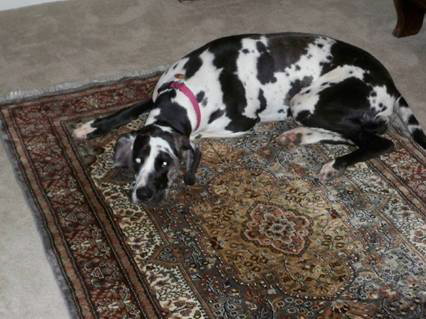
I know he chewed the rug… but he’s so CUTE!
It’s all fun and games until the valuable oriental rug in the den gets a pet urine stain that’s not coming out.
Pet urine is at the top of the “uh oh” chart of rug disasters. The stains are usually permanent. But if the field has a busy design that might not be a big issue.
The odor though… well, that IS a lingering issue, and the longer that urine sits in those rug fibers, the worse of an issue it’s going to become to the rug and the floor.
The top topic this month from cleaners who wrote me “HELP ME!” emails was how to get pet urine odor out of rugs, so that’s my topic for this post.*
(*My disclaimer here for professional cleaners is, these are my opinions from our company’s experience and the experience of students I’ve trained. Please do NOT take my word as gospel here, they are simply educated recommendations because every rug and situation is different. My advice is not meant to be a substitute for your getting actual training in this craft, and seeking out additional real world experience to enhance your own skills. For goodness sakes TEST everything in small attempts first. Every rug must always be fiber tested, dye colorfast tested, and thoroughly pre-inspected before cleaning. Always. Okay… let’s go into some recommendations on pet puddles.)
If you happen to be a rug owner, and a pet owner, here is a post with some tips on what to do and why you need to jump on pet accidents right away => Pet Accidents Happen. Now What?
Otherwise, the rest of you professional cleaners, let’s talk about odor removal.
PET URINE ODOR REMOVAL FROM RUGS
Remove The Source (Woven Rugs)
First things first… you need to remove the source of the odor, so the urine needs to come out of the middle of that rug.
Woven rugs are often constructed with wool knots wrapped around cotton warps and wefts (the foundation fibers).
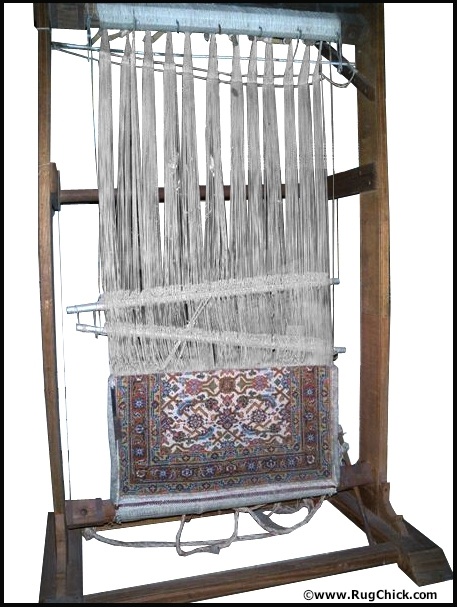
Rug loom. Hand tying wool knots around cotton warps.
Cotton, as you know, is absorbent. This is why we use cotton towels to wipe things up – they pick up moisture.
So when warm pet urine hits a rug, it will be suspended for a short time (because wool has a natural repellency to moisture) and then it will penetrate the wool fibers and be pulled into those cotton fibers.
This is why when you see a urine stain on a rug, you know you are only seeing the tip of the iceberg. There is a larger amount of urine inside that rug than you are seeing.
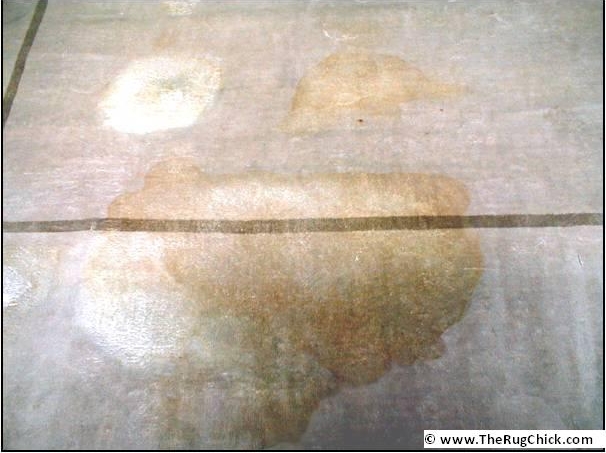
This is a much BIGGER accident than what you see…
With rugs, removing the odor source means you are going to have to wash it out. You cannot surface clean an oriental rug with a truck mount or portable and remove the odor causing elements from the inside foundation fibers. It just does not work that way. And trying to cover up your incomplete work with a heavy fragrance deodorizer is going to just make it worse. It’s like spraying Lysol in a Port-a-Potty… floral smelling sewage ain’t going to cut it on this one.
(By the way, woven oriental rugs should never be surface cleaned in the home with carpet cleaning equipment, for a variety of reasons I shared in a recent post on “Why Rugs Aren’t Cleaned In The Home.” If you are going to be a real rug cleaner, you are going to have to clean rugs properly in your facility.)
The most thorough way to get to the odor-causing contaminants out of woven rugs is to WASH the rugs.
Quick FYI: “woven” rugs are rugs where you can see the design on the back the same as on the front, like this:
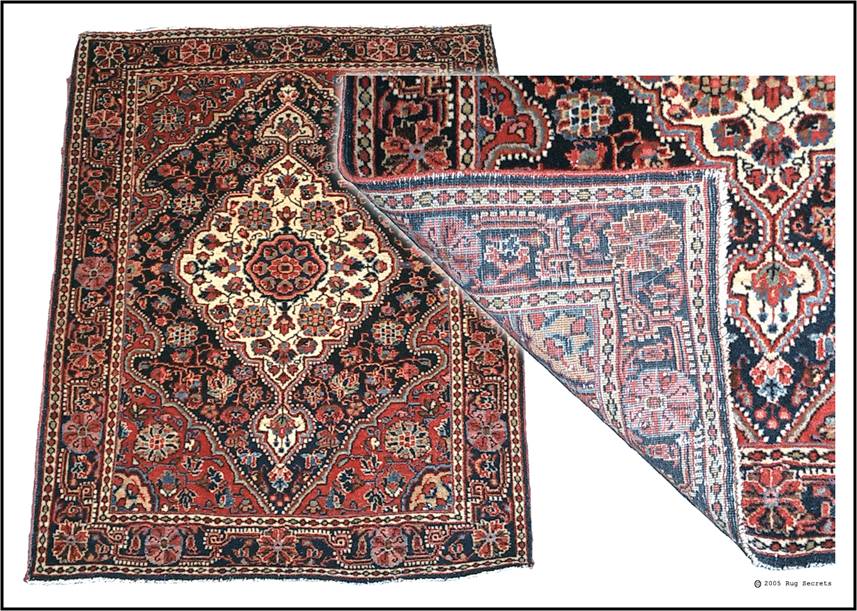
Woven rug, you see the design on the back same as the front. This one is woven by hand
Here’s another woven rug, but by machine:
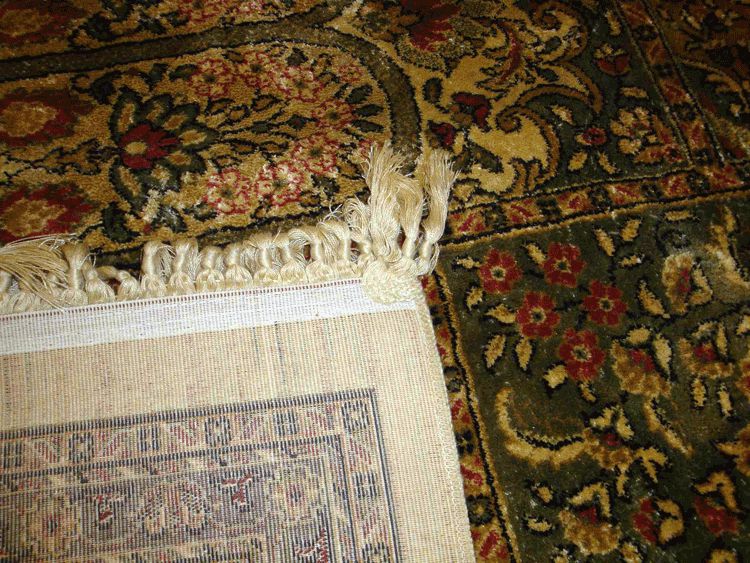
Woven rug. Machine made.
Removing the source means washing it out. This is what full-service rug cleaning facilities do.
They may wash in a wash pit, or on a larger wash floor, but they WASH the rugs clean.
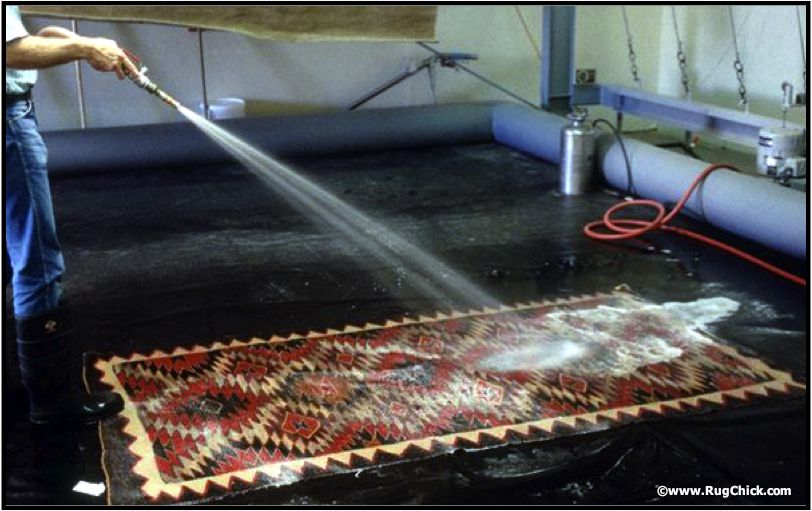
Rug wash pit.
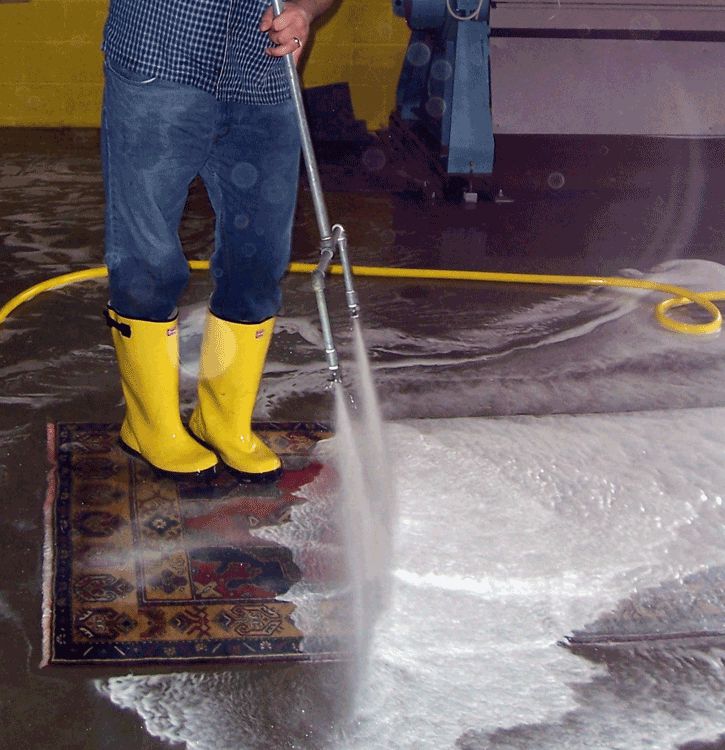
Wash floor – high volume water.
If you are not experienced at washing rugs, you need to be particularly careful when pet urine is involved, because this creates a lot of dangers for rug cleaners.
Dangers From Pet Urine To Woven Rugs
It’s not just the odor that is a problem for rug cleaners, there are 3 other big dangers to be wary of:
1) STAINS
Pet urine stains are often permanent, especially if they have been there for awhile. Sometimes chemical stain removers can be used to try to strip out the yellow urea staining, but this will create damage to the fibers as a result (all bleaching and stripping agents cause fiber damage), so you need to be especially careful in any stain removal attempts or your client’s pet stain may become worse… and become YOUR stain instead of theirs.
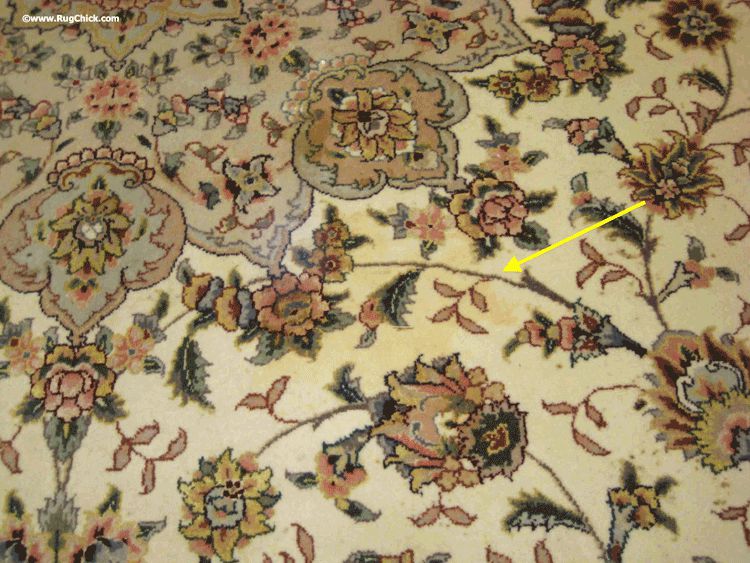
Pet urine stain on a Tabriz rug. Haphazard stain removal could easily make this rug worse.
Often the best path to take is to state that the stain is likely permanent, and with that being the case, do they still want the rug washed and the urine removed so that the odor is gone.
If the stained area improves during the wash, then that’s great. It’s just not wise to guarantee anything besides that you will try your very best, especially if the rug’s owner already tried a bunch of over-the-counter “miracle” stain removers before they brought it to you. They likely have “set” the stain worse in their panic.
If you are truly skilled at wool stain removal, then you can of course guarantee whatever you want to. I’ve just found over the years that when we’ve said “no problem” – we’ve jinxed the job… and sometimes when we’ve said it won’t get better at all, and tried to turn the job away, it’s actually washed up great.
You just never know, so it’s best to keep expectations low in any case involving pet urine, vomit, or feces.
2) DYE BLEED and COLOR LOSS
Even very colorfast dyes on a wool or silk rug can bleed with longterm exposure to pet urine. I’ve seen rugs that would never “bleed” even if involved in a flood for days (like a 1920’s American Sarouk rug with iron-clad dyes) bleed when exposed to repeated pet urine stains.
Over time pet urine stains shift from acidic to alkaline. The problem with alkalinity is that it can cause serious damage to acid rug dyes, and those areas can release and bleed the color when wet despite using your rug dye stabilizing solutions.
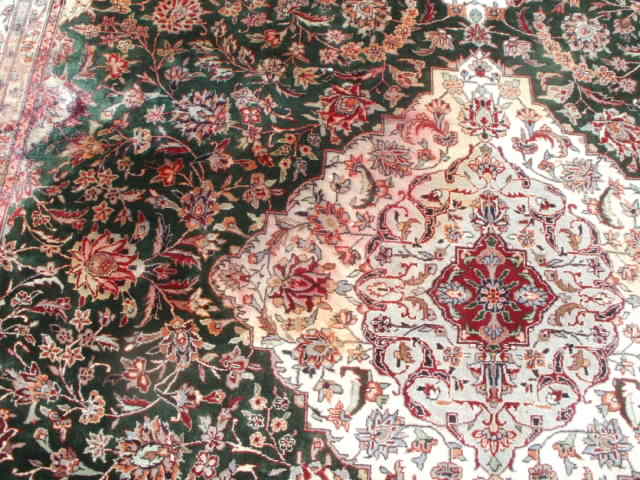
Red dye bleed on a silk rug from pet urine.
This alkalinity problem is the same one that creates dye bleeding problems for on-location carpet cleaners who use their carpet cleaning machines and solutions (which tend to be alkaline because they are meant for synthetic wall-to-wall carpeting) on natural fiber rugs. This mix often creates disasters.
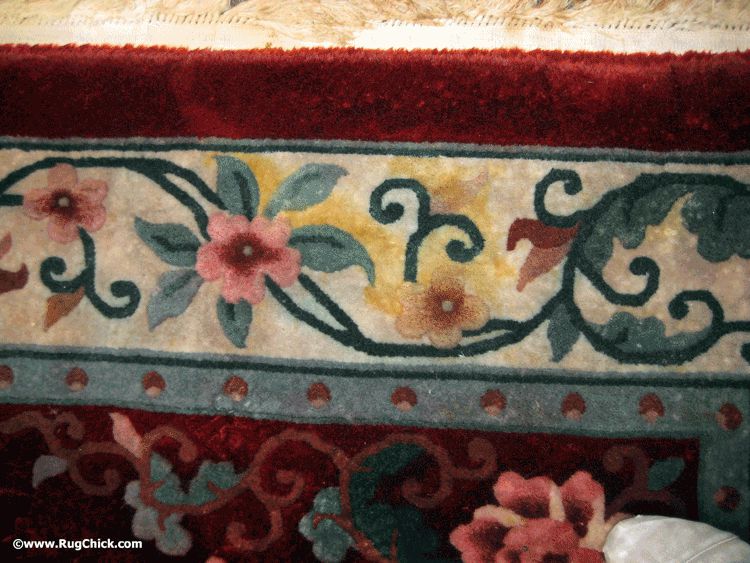
This Chinese rug has strong dyes, but the combination of pet urine AND an improper use of high-pH traffic lane cleaner by a carpet cleaner made the red and green dyes bleed badly.
The danger of old pet urine stains is that even if you test the rug’s dyes, and it tests colorfast, it is very likely those urine affected areas will still bleed on you. In fact, you should expect them to, and inform your client that though you are taking every necessary precaution, that is dye damage that is pre-existing from their pet.
You also may have situations where the wash takes the dye that has “dissolved” away from the fibers due to the long term urine exposure, and you end up with situations of rug dye loss, where the color just washes away and disappears, and only the yellow urea remains.
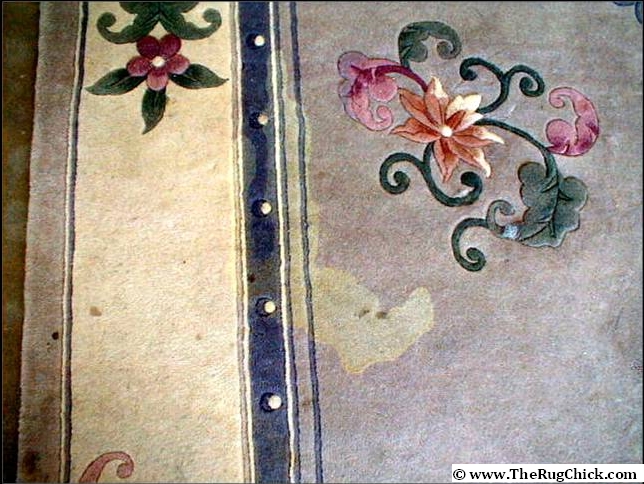
Light gray color is gone where the urine stain is.
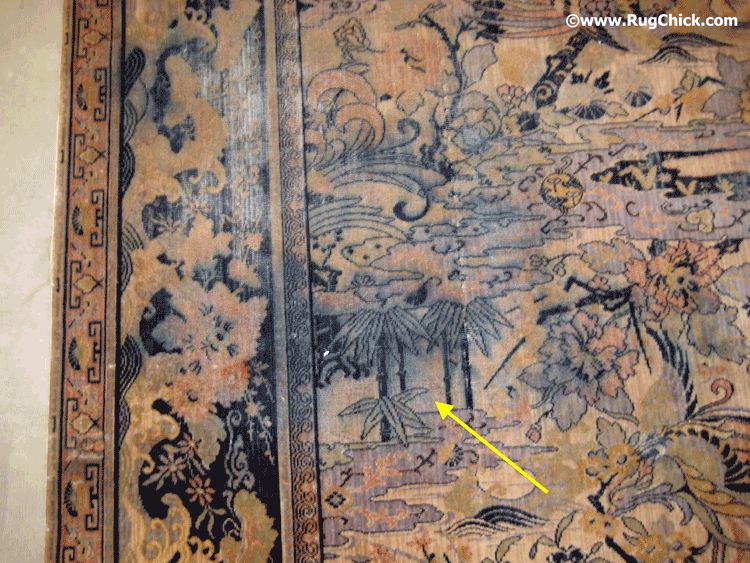
Blue has bled on this Wilton rug. Washing will created faded away areas as a result.
3) DRY ROT
The worst danger from long-term, repeated exposure to pet urine is that the cotton foundation fibers start to mildew, and begin to become rotten from dry rot. Dry rot is not correctible. In worst case scenarios, usually seen from plants on top of rugs where moisture slowly rots the rug away, this creates large holes as a result. This rug had a pot sitting along the end, and the owner never knew she was harming her rug:
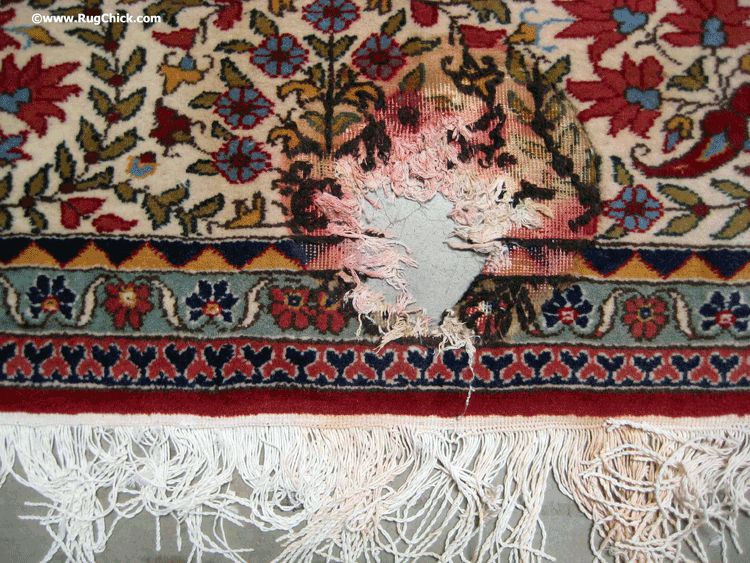
Potted plant on end of rug eventually rots a hole in it due to moisture and spills over time.
When pets repeatedly puddle in the same area of a rug over and over again, this type of dry rot risk is likely to happen. So it is important to inspect the areas of the rug where you see pet stains, and inspect the back of the rug to see if you see any signs of dry rot, such as dark mildew activity in the cotton fibers and a stiffness to the affected area.
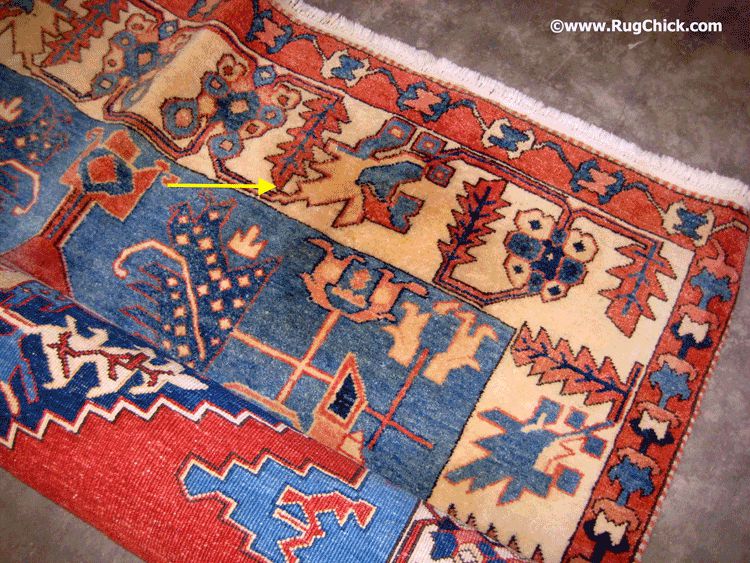
Urine stain visible on front of this Azeri rug. We need to look at the back.
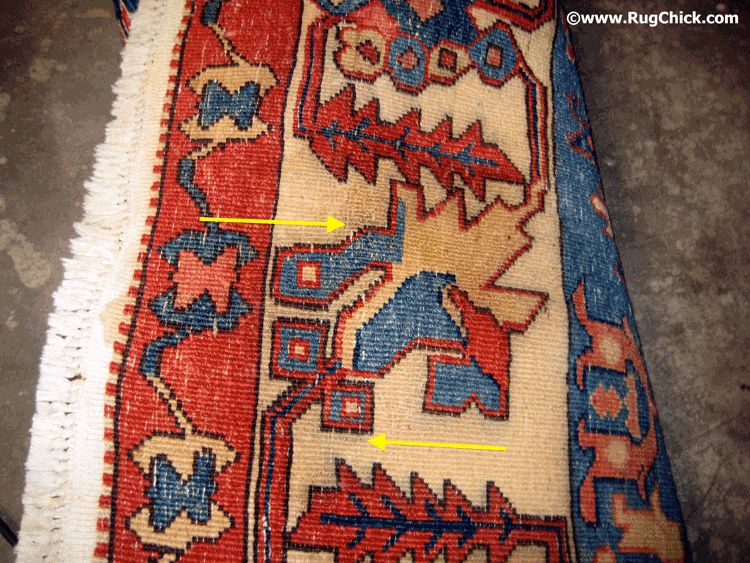
Top arrow shows dark mildew growth in foundation fibers that is the sign of dry rot, and lower arrow shows how repeated urine has bled a brown dye that is colorfast.
With dry rot you risk creating a hole during cleaning if you are not careful, especially if you use an extractor. Proceed at your own risk. When a pet stain becomes a big hole, that will become “your” problem to the owner… even though it was pre-existing damage from the pet.
Remove The Source (Tufted Rugs)
Tufted rugs present a real challenge with odor removal. Unlike woven rugs, with tufted rugs you do not see the design on the back side – you either see a material backing or a latex mesh backing:
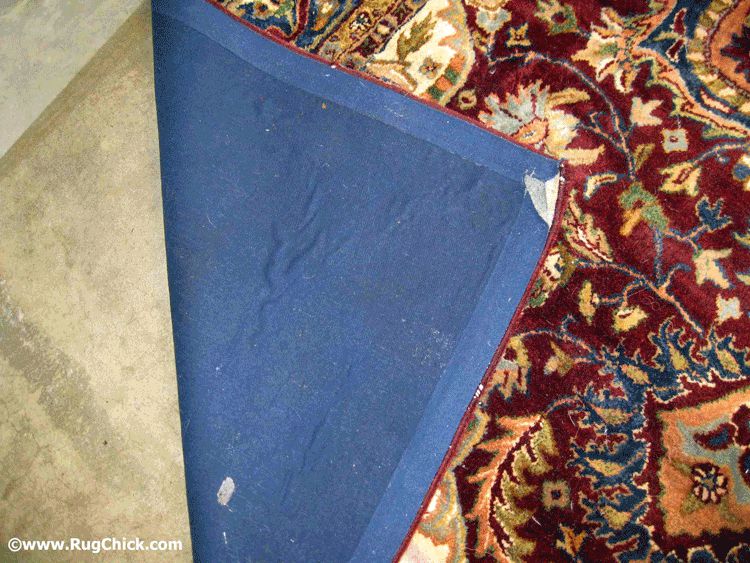
Tufted rugs today often have material backing to cover up the ugly latex holding it together.
I refer to tufted rugs as “fake rugs” because they are a quick way to create the look of a woven rug without the quality or care. And I am not a fan of the fact that these rugs are often held together with heavy latex adhesive that can sometimes smell like an acrid rubber tire, and is next to impossible to remove that odor and any other odors that may be added to it.
The dangers for woven rugs from long term pet urine exposure apply to tufted rugs also, but you have some additional concerns as well. One is delamination which will likely get worse while you try to thoroughly wash the pet urine out of the rug. The rug may fall apart on you, or at the least need an additional application of latex to try to hold it back in shape again.
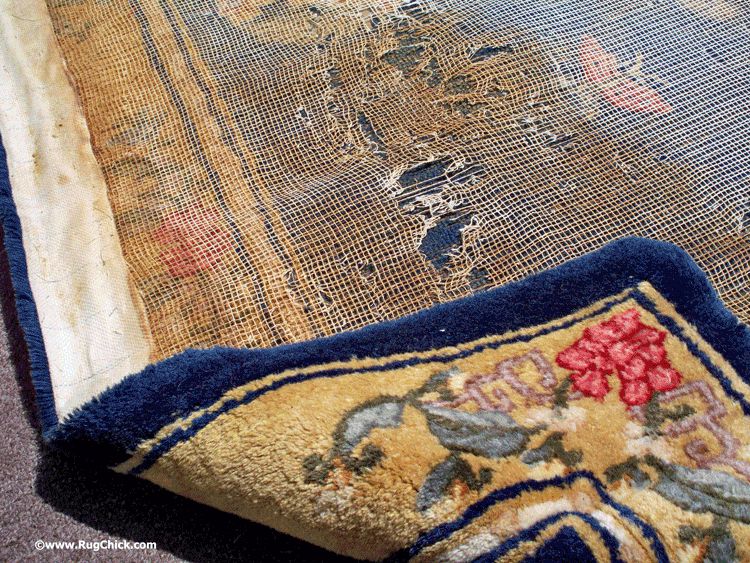
Latex is crumbling away from a combination of age, repeated pet urine stains, and repeated washings needed to remove the odor-causing contaminants.
You need to make sure the rug is sturdy enough to handle a wash. You also need to test the tuft strength, because if the latex is deteriorating, those fibers may pull right out if you try to scrub or extract water from the rug.
Recommended Cleaning Steps For Woven & Tufted Rugs Contaminated By Pet Urine:
1) Pre-Inspect and Protect
The more time you spend thoroughly pre-inspecting a rug BEFORE the wash, the less time you will spend trying to correct mistakes made by failing to fiber test, dye test, or truly look at BOTH sides of a rug for any warning signs.
One big rookie mistake is doing a quick dye test, seeing the dyes are colorfast, and being shocked when the pet urine stained areas all bleed on you DESPITE your use of dye stabilizing solutions.
Pet urine on a rug means it will have problems, so if it your responsibility to explain this to the owner BEFORE the wash, that the rug is damaged and that the thorough washing required to remove the odor causing contaminants increases risks of dye migration in these urine affected areas. You need to be released from liability on this point because the damage to the dyes (and to the value of the rug) is pre-existing.
If the rug’s owner does not want to release you from this liability, then you need to turn the job away.
2) Pre-Treat Visible Pet Urine Stains
On rugs that have a potential to “bleed” on you (obviously natural color rugs with urine stains are not a dye bleed risk, so any colorful rug IS a risk, even with colorfast dyes) – this is a strategy I recommend to those who attend my courses in order to minimize the dye migration impact on the rug.
Soaking a rug in an acidic bath helps remove the urine salts in the middle of the rug that are causing the odor.
Many professional rug plants will soak the rug in vinegar (acetic acid 6% diluted down to 3%) to flush out the urine in a wash pit or floor. For those who don’t like the odor of vinegar Sapphire Scientific’s new Dye Stabilizer & Rinse will do the same, without that odor.
But, especially with a wash pit, you risk dye migration throughout the entire rug by just having it soak in an acid bath for an extended period of time no matter what you use.
A better strategy is to flush out the urine in the specific stained area without creating risk for the rest of the rug. You can do this by pouring your chosen pre-treat solution on the stain directly, wet it down for a few minutes, and then use the Water Claw Spot Flasher to extract out the urine from the innermost fibers.
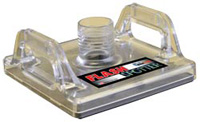
Water Claw Flash Spotter
On woven rugs, this is best done from the back side of the rug, and it helps to have a pad or other type of cushioned surface to help create the “compression” to help pull out more moisture.
With tufted rugs you will not be able to get through that latex, so you need to do it from the front side.
You want to pre-treat the area more than once if you still see yellow water (urine) coming out from the stained area.
Instead of releasing the urine – and the dye – from these areas into a wash pit, where it’s affecting the entire rug, you can control the removal of a lot of the “source” spot by spot. Dyes will bleed in these areas, but the Water Claw will remove most of it along with the urine. This means less migration risk to you during the wash process, and a better chance of success of getting the rug odor-free (if it is woven… tufted rug latex is VERY difficult to remove urine odor from because it gets inside that adhesive).
3) Wash & Deodorize/Enzyme If Needed
After pre-treating the urine stained areas to remove as much of the odor-causing source as you can, then you proceed to your normal wash process.
(I am assuming here that you know how to dye test and know how to adjust your cleaning times and strategies based on whether they dyes test as colorfast or fugitive, and what products you need to use to properly and safely clean natural fiber or synthetic rugs. If you do NOT know this, then get more education before you attempt to wash rugs… otherwise you will end up buying them when you ruin them.)
In a pet urine affected rug, even if the dyes test as colorfast, I personally would wash it like I would a “bleeder” – quick and using a Dye Stabilizer solution and a cleaning solution in the neutral pH range, or acidic.
Based on your experience and judgment, choose your wash process to proceed with, and if there remains an odor on the wash floor, you can choose to use your preferred deodorizer or enzyme treatment at this point.
Often I find that the pre-treat process with our regular wash process is all that is required to remove the odor. But on heavily contaminated rugs, or tufted rugs that have the latex holding onto the urine smell, we will use a Deodorizer.
Deodorizers that I’ve had personal experience – and success – with are Sapphire Scientific’s Area Rug Deodorizer, OdorX’s Un-Doz-It, Masterblend’s Anti-Allergen Deodorizer (I prefer this to Masterblend’s Skunk Odor Remover because it has no fragrance and the SOR has a heavy fragrance – but some rug cleaners like to use SOR), and Bridgepoint’s Hydrocide.
I am sure there are other good products out there, including some enzyme products, these are just the ones I’ve had some experience with.
Be sure to thoroughly rinse the rug. I like to use an acid rinse to remove residue as some of these products get a bit foamy on you.
4) Dry Thoroughly & Additional Work If Needed
Remove the water from the rug and drying it thoroughly. If you want ideas on different tools and equipment to use for this step, and others from the wash process, you can reference my post on Rug Shop Set-up’s. All the current options are up there, including some D-I-Y set-ups.
Many long time rug operations have a COOL old school roller wringer like mine here:
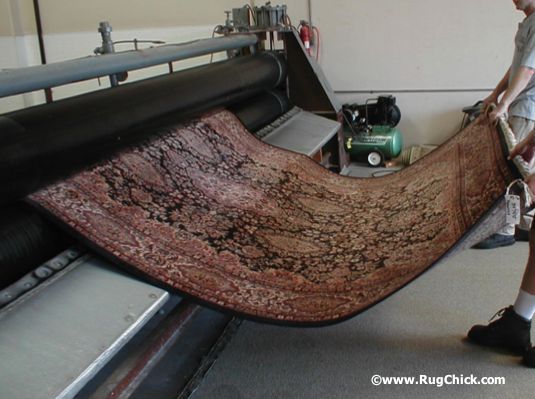
Rug through roller wringer. Safely and quickly removes the excess water and flattens out the rug for quick drying.
This is the quickest way to get most of the water out of the rug, plus there is the added advantage of it “ironing” out the rug so that it is very flat and even during the final drying process. (By the way, they do not build these wringers any more here in the US – so most of us have bought them second-hand. I have a friend here in CA who is looking to sell his large roller wringer, so if you are interested, send me an email at rugchick@gmail.com and I’ll connect you to him. It’s a screaming deal… and a great piece of machinery. We LOVE our wringer.)
Back to pets…
If despite your pre-treat, wash, and deodorizing attempts, you still have a noticeable urine odor to the rug, your last chance of success short of washing the rug completely all over again, is using the Odorox machine – which we’ve used a few times on rugs with chronic pet urine contamination (multiple dogs over multiple years).
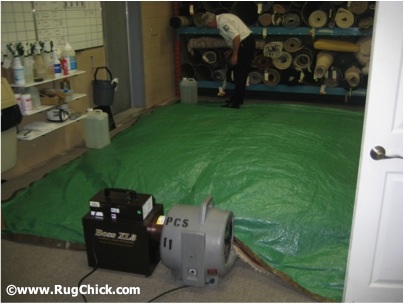
Odorox treatment to remove odor. Rug is under the tarp.
Though we have NOT had any success removing the awful rubber odor from bad latex tufted rugs… we have had success removing urine odor from rugs where repeated washings could not get the job completely done. I’ve been really happy with this machine so far.
Those are my tips for you to help you have more success in tackling the biggest challenge we have in the rug cleaning field – handling pet damaged rugs.
If you happen to have your clients asking you for some recommendations on rugs, and they happen to have pets, here are a few tips I share with our pet-owning clients. Feel free to use them as well.
TIPS FOR RUG OWNERS WHO HAVE ACCIDENT-PRONE PETS…
You need to own rugs that can be WASHED, so look for woven rugs instead of tufted ones. If price is an issue, look for machine woven rugs, or perhaps synthetic rugs. Synthetic fibers tend to be less expensive than natural fibers (they also are not as nice, because the best fiber for rugs is wool… but if your pets will be puddling often, you might as well have them do it on an inexpensive machine made synthetic rug).
Pick a rug with a BUSY design so yellow stains will not be obvious. Rug Cleaners can wash the odor out of woven rugs, but stains will likely be permanent.
Use a pad under the rug even if it does not slide or buckle on you, because this will help create a barrier between your rug and your floor. If pet urine penetrates the rug and gets into your flooring, you will have a much larger odor removal problem on your hands, especially if you have specialty hardwood floors. It may not be possible to remove the odor short of replacing the floor, so a pad can help protect you from the worst case scenario… or at least delay the inevitable if your puppies aren’t trained quickly.
I hope you found some value in this post on pet puddles. If you have any questions on this post, please contact me using our online form. I don’t have all the answers… but I do my best to share what I know.
Happy rug cleaning!
– Lisa
